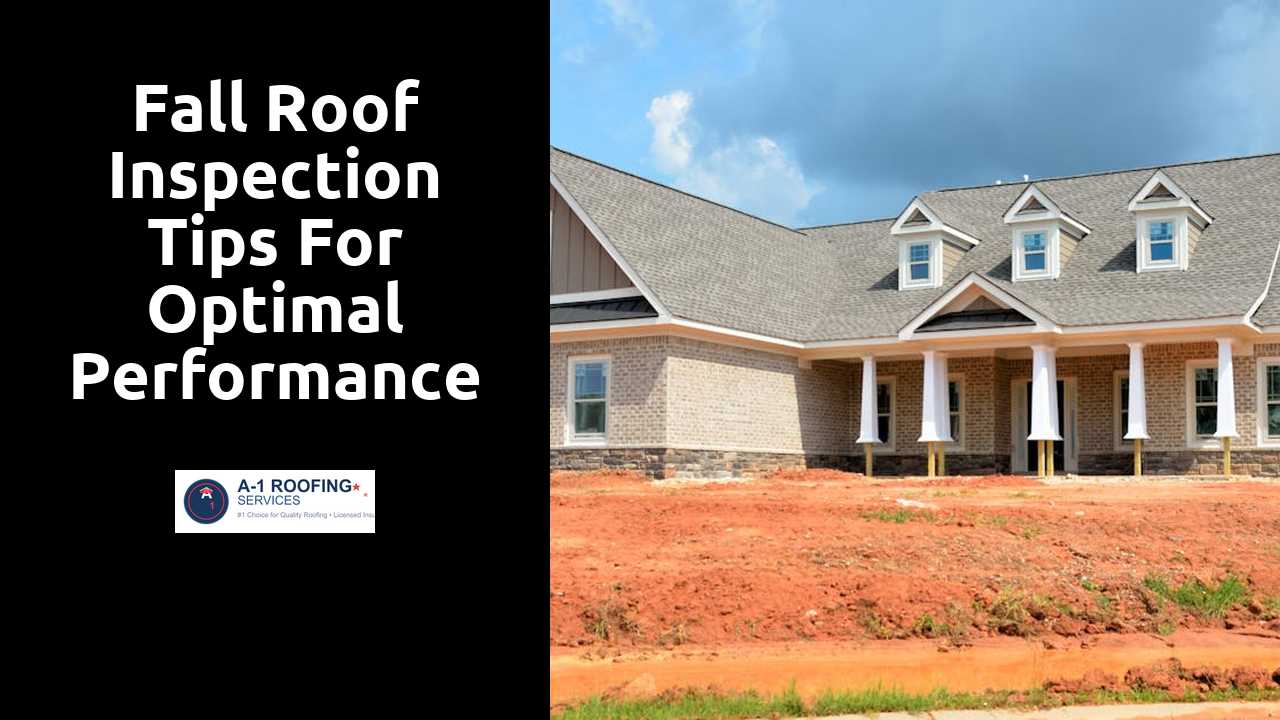
Fall Roof Inspection Tips for Optimal Performance
Table Of Contents
Inspecting Shingles and Roof Materials
A thorough inspection of shingles and roof materials is essential for maintaining the integrity of a roof. Homeowners should look for signs of curling, buckling, or missing shingles. These issues often indicate that the roof is nearing the end of its lifespan. Additionally, inspecting for any granule loss can reveal underlying problems. Granules protect the shingles from UV rays and contribute to their durability.
Beyond shingles, it is important to check the overall condition of roof materials. This includes looking for any deterioration around vents, chimneys, and skylights. Cracks or gaps in seals can lead to water infiltration, causing damage to the underlying structure. Ensuring that all components of the roof remain in good shape allows for optimal performance and longevity. Regular inspections can prevent minor issues from escalating into costly repairs.
Additional info can be found here.
Recognizing Wear and Tear
Inspecting shingles closely can reveal critical signs of wear and tear. Look for missing, cracked, or curling shingles, which often indicate that the roofing material has reached the end of its lifespan. These issues can lead to moisture penetration, increasing the risk of leaks. It’s also important to check for discoloration or granule loss. Discoloration can suggest the breakdown of the protective coating, while granules accumulating in gutters may signal that shingles are deteriorating.
Beyond the shingles, the overall condition of the roof should be assessed for any less visible signs of damage. Pay attention to sagging areas which can show structural issues often exacerbated by age or weather. Observing rust or corrosion around flashing and vents is another red flag. These indicators can compromise both the integrity and efficiency of your roofing system, making it essential to address them promptly to avoid more extensive repairs down the line.
Evaluating Roof Flashing
Roof flashing serves a critical function in protecting vulnerable areas of a roof from water infiltration. It is typically installed around chimneys, vent pipes, and roof valleys. Regular inspections of flashing areas are necessary to identify any damage or deterioration that could lead to leaks. Look for cracks, rust, or gaps in the flashing material, as these can compromise the integrity of your roof and require immediate attention.
Proper sealing is essential to ensure that flashing remains effective over time. If the flashing appears loose or unsealed, it’s important to reapply roof sealant to prevent water from seeping underneath. This maintenance step can significantly extend the lifespan of the roofing system. Additionally, pay attention to the overlap of flashing components, ensuring they are correctly positioned to direct water away from critical areas. Routine evaluations can prevent costly repairs down the line.
Importance of Proper Sealing
Proper sealing on a roof plays a critical role in preventing water intrusion and maintaining the integrity of the structure. Seals around chimneys, vent pipes, and other penetrations can degrade over time, leaving vulnerable areas that allow moisture to seep in. Regular inspections can help identify cracks, gaps, or signs of deterioration in the sealant material. Addressing these issues promptly can minimize the risk of leaks and subsequent damage to the roof and underlying structures.
Additionally, the type of sealant used is essential for effective protection against the elements. High-quality, weather-resistant sealants provide better durability and longevity compared to inferior alternatives. It's advisable to choose products specifically designed for roofing applications, as they can better withstand temperature fluctuations and UV exposure. Taking the time to ensure that seals are intact and using appropriate materials can greatly enhance the roof's performance throughout the fall and beyond.
Gutter and Downspout Maintenance
Regular maintenance of gutters and downspouts is essential for ensuring that water is effectively channeled away from the roof and foundation. Leaves, twigs, and debris can accumulate, hindering proper water flow. This blockage may lead to water pooling on the roof, which can cause shingles to deteriorate and contribute to leaks. Cleaning out gutters at least twice a year, particularly in the fall after leaves have dropped, can prevent these issues and prolong the life of the roof.
Downspouts should be inspected to ensure they direct water away from the house. Additionally, ensuring that the downspouts are clear of obstructions will help mitigate the risk of water damage to both the roof and the foundation. Downspout extenders can be installed to further enhance drainage efficiency. Investing time in gutter and downspout maintenance can save homeowners from costly repairs down the road.
Preventing Clogs for Roof Health
Regular maintenance of gutters and downspouts is essential for preventing clogs that can lead to significant roof damage. Leaves, twigs, and other debris can accumulate, obstructing the flow of water. When gutters are not cleared, water can overflow and pool around the foundation, causing issues like rot or leaks. By taking the time to clean these areas, homeowners can help ensure that water flows freely away from the roof and structure.
Installing gutter guards can also provide an added layer of protection against clogs. These guards serve as a barrier, allowing rainwater to pass through while keeping larger debris at bay. Regularly checking the condition of these guards is just as vital as cleaning gutters. If they become damaged or dislodged, their effectiveness diminishes, leading to potential blockages. A proactive approach to gutter maintenance can significantly extend the life of the roof and improve overall home health.
Related Links
Effective Techniques for Clearing Leaves from Your RoofSummer Roof Maintenance Checklist for Homeowners